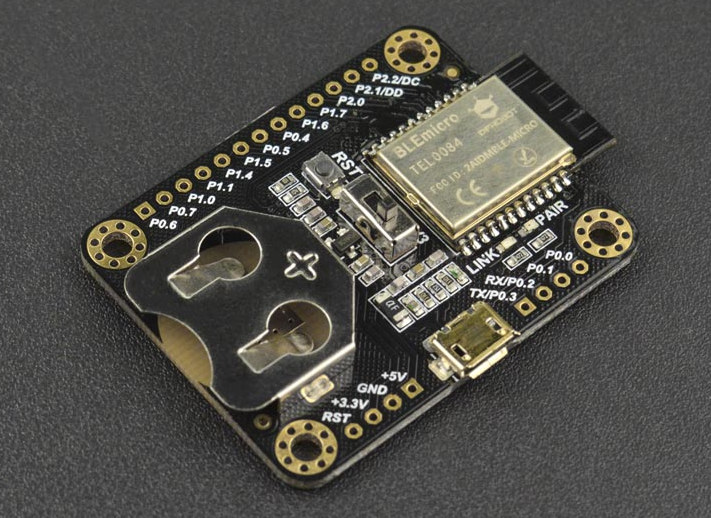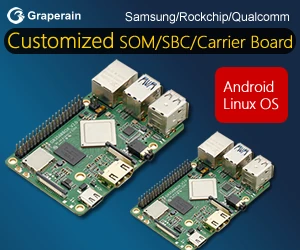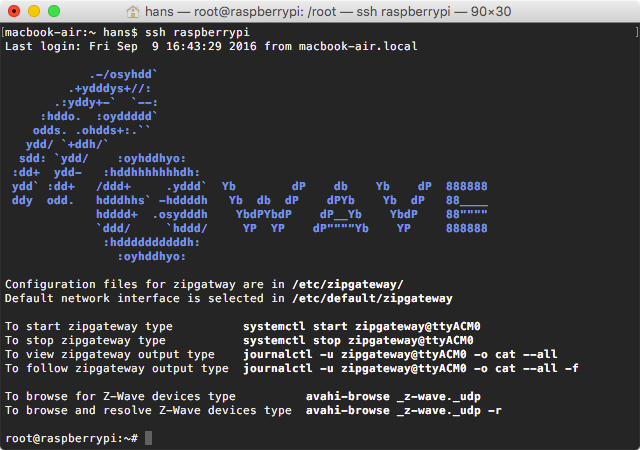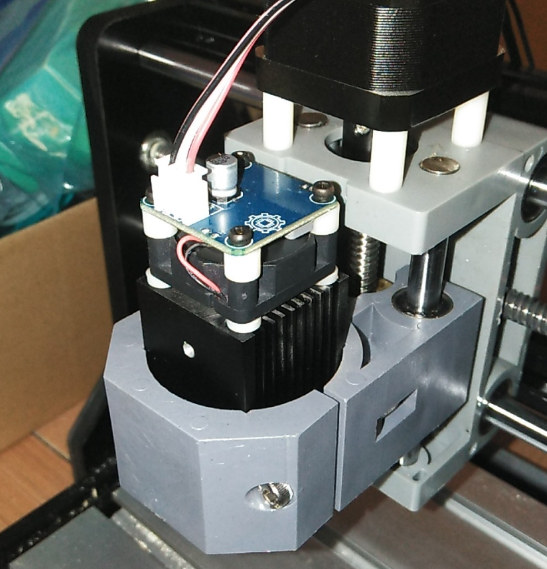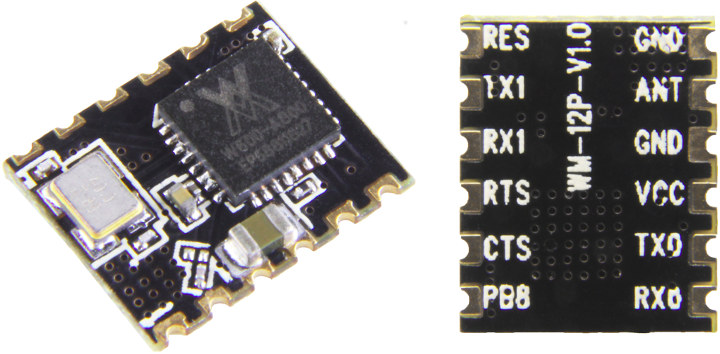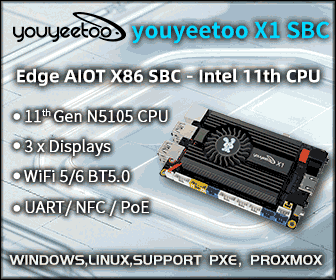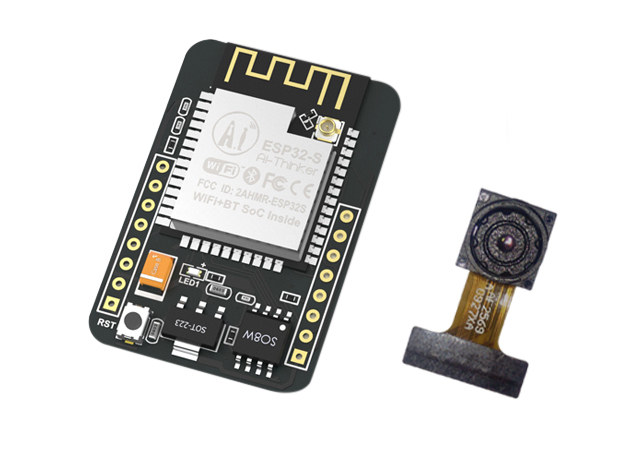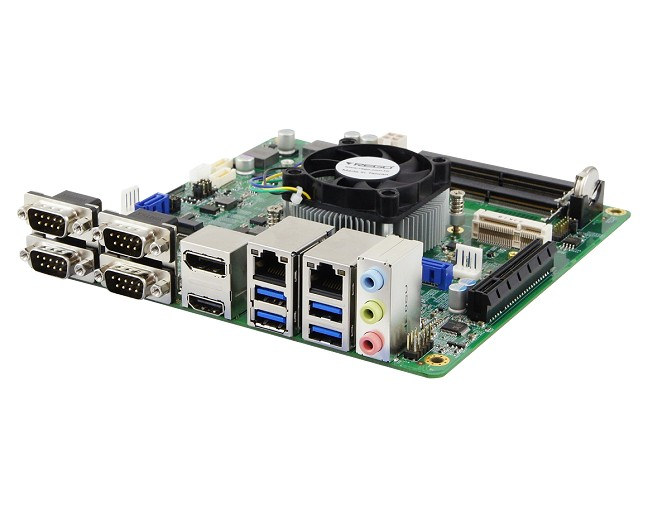Terminology used by engineers may be confusing for end-users, so for example in the TV market 720p becomes “HD Ready”, 1080p “Full HD”, and 4K may be referred to “Ultra HD”. A few years ago, I tried to buy a 1080p TV, and the seller was really confused at first saying they only had “HD Ready” or “Full HD” televisions. Two terms I had personally never heard of myself, but eventually we managed to understand each other… Up to now the official IEEE name for different WiFi standards like 802.11n, 802.11ac, or the new 802.11ax may have been a little confusing to consumers. So the WiFi alliance has decided to launch a new scheme naming scheme. We’ll soon have to refer to 802.11n routers as WiFi 4 routers, AC routers as WiFi 5 routers, and it will probably be less confusing for 802.11ax routers since I expect them to be […]
BLE Micro is a Tiny, Coin-Cell Powered Bluetooth 4.0 Development Board
DFRobot Bluno is a Bluetooth 4.0 LE development board following Arduino UNO form factor, and powered by TI CC2540 chipset. The board sells for $24.90 on their online store, and the company provides firmware and mobile app source code, but if you ever wanted a similar solution in a much smaller form factor, and powered by a coin cell battery, the company has now launched BLE Micro board. BLE Micro board specifications: Bluetooth Chip – Texas Instruments CC2540 8051 MCU with USB, Bluetooth 4.0 LE connectivity Wireless Connectivity Frequency: 2.4GHz Transfer rate: ≤1Mbps Modulation: GFSK, Bluetooth low power, V4.0 Sensitivity: -93dB Transmission distance – 30m in free space USB – 1x micro USB port Expansion – 21 through holes with reset, power signals, UART, and GPIOs. Input Voltage: +3.3 DC Power Consumption – Working: 10.6mA average, ready mode:8.7mA Temperature Range – -10 ℃ ~ +65 ℃ Dimensions – 49mm x […]
Silicon Labs Releases Z-Wave Public SDK, Raspberry Pi 3 Image
Z-Wave is a wireless communication protocol initially developed by Zensys, before being purchased by Sigma Designs which provided Z-Wave compliant chips, and this year Silicon Labs purchased Z-Wave from Sigma Designs, Z-Wave is fairly popular in the US, and the Z-Wave alliance has certified around 2,400 products so far. However, we seldom hear about hobbyist projects featuring Z-Wave because the wireless protocol is proprietary, documentation was not available publicly, and you’d also need a few thousands dollars to get started: $4,000 a year to be a Z-Wave Alliance member, $2,500 for certification, and the development kit sells for about $2,000… But in 2016, things improved with Sigma Designs releasing Z-Wave Application Layer specifications publicly, as well as Z-Wave over IP (Z/IP), Z-Ware Middleware, and the Z-Wave S2 Security Specification. But you still needed to acquire the Z-Wave SDK and obtain access to the Z-Wave Technical Support website and the Z-Wave […]
Genmitsu CNC Router Review – Part 1.5: Laser Attachment
Hey Karl here with a small update for the SainSmart Genmitsu CNC Router 3018 review. In the first part I described the build and first cuts. And in this part I am calling it 1.5 because it is to just talk about the optional laser attachment that was just made available and initial impressions. In the first part I commented about the laser connector on the board. The stars aligned and Sainsmart asked if we wanted to check out their 2.5W PWM controlled laser sold for $89.99 with free shipping. Installation In the box all you get is the laser itself and some eye protection. At first I wanted to mount the laser on the side of the tool head so it would be easy to change between CNC and the laser. I took the laser apart and was going to use the 2 mounting holes and ended up breaking […]
Dav1d Open Source AV1 Decoder Aims to be Fast and Lightweight
Lots of efforts are being put into AV1 open source, royalty-free video codec with the AV1 specification published in March, and companies like YouTube and Netflix having recently uploaded AV1 video samples for testing and evaluation. We also reported FFmpeg 4.0 was released with AV1 supporting using libaom reference decoder. However, the library is not really optimized for code size and speed, but instead just to demonstrate AV1 decoding and encoding. So VideoLAN, VLC and FFmpeg communities have been working on another decoder called Dav1d – which stands for “Dav1d is an AV1 Decoder” – that aims to be lightweight, cross-platform, fast and open source. Some of the technical details about dAV1d include: written in C99 without VLAs (Variable Length Arrays) ASM in NASM/GAS syntax (no intrinsics), Meson/ninja buildsystem, Works on x86, x64, ARMv7, ARMv8 architectures for now Runs on Windows, Linux, macOS, Android, iOS operating systems Licensed under BSD […]
Air602 is another $2 WiFi IoT Module, Based on Winner Micro W600 Arm SoC
WiFi used to be fairly expensive to add to MCU projects with spending $30 to $40 just for a WiFi module pretty common just less than 5 years ago, but this all changed thanks to Tensilica based Espressif ESP8266 modules selling for $5 in 2014, and an active community gathering behind the WiSoC, and related modules and development board. ESP8266 modules are now available for under $2, and around two years ago it looked like we would have another option based on Arm Cortex-M3 with RTL8710 modules such as Pine64’s PADI IoT stamp also selling for about $2 in single quantities. However, most people did not really the benefit of switching to another platform based on Arm for this type of applications, and the products never really took off, many went away, and PADI IoT stamp appears to be one of the few survivors. Yet another $2 WiFi IoT module […]
ESP32-CAM is a $10 ESP32 Camera Development Board
Espressif Systems ESP32 has many new interfaces over ESP8266, but still lacks a hardware camera interface like DVP or MIPI CSI. However, it’s still possible to connect a camera to the I2S interface. What? Isn’t I2S used for audio? It turns out there’s more to ESP32’s “I2S interface” as pointed out in the forums: The I2S subsystem in the ESP32 also provides a high speed bus connected directly to RAM for Direct Memory Access. Putting it simply, you can configure the ESP32 I2S subsystem to send or receive parallel data under hardware control. There were some ESP32 camera boards launched previously such as ESP32-PICO-tinyCAM, but most seem to have been phased out. However not is all lost, as Seeed Studio is now taking pre-orders for the new A.I. Thinker ESP32-CAM board with a 2MP camera for $9.90. ESP32-CAM board specifications: Wireless Module- ESP32-S WiFi 802.11 b/g/n + Bluetooth 4.2 LE […]
iBASE Introduces MI988 Ryzen Embedded V1000 Mini-ITX Motherboard
iBASE has recently announced the MI988 Mini-ITX motherboard based on the latest AMD Ryzen Embedded V1000 processor family. The motherboard is equipped with two DDR4-2666 SO-DIMM slots that support up to 32GB ECC memory, M.2 NVMEe storage (NVMe), two Gigabit Ethernet ports, and various display options. iBASE MI988 motherboard specifications: SoC – AMD Ryzen Embedded V1000 processor with AMD Radeon Vega GPU System Memory – 2x DDR4-2666 SO-DIMM, supports ECC, up to 32GB Storage – 1x M.2 SSD (NVMe), 2x SATA III Display Interfaces 1x HDMI 2.0a, 1x DisplayPort 1.4 1x eDP or 1x 24-bit dual channel LVDS Audio – Built-in HD audio w/ALC662 codec for 5.1 channel; 3x 3.5mm audio jacks Connectivity – 2x RJ45 Gigabit Ethernet connectors via 2x Intel I211AT USB – 2x USB 3.1 Gen2 (10Gbps) on board, 2x USB 3.1 Gen1 (5Gbps) on board Serial – 2x RS232/422/485 (Jumperless selection), 4x RS232 Expansion Slots 1x […]


